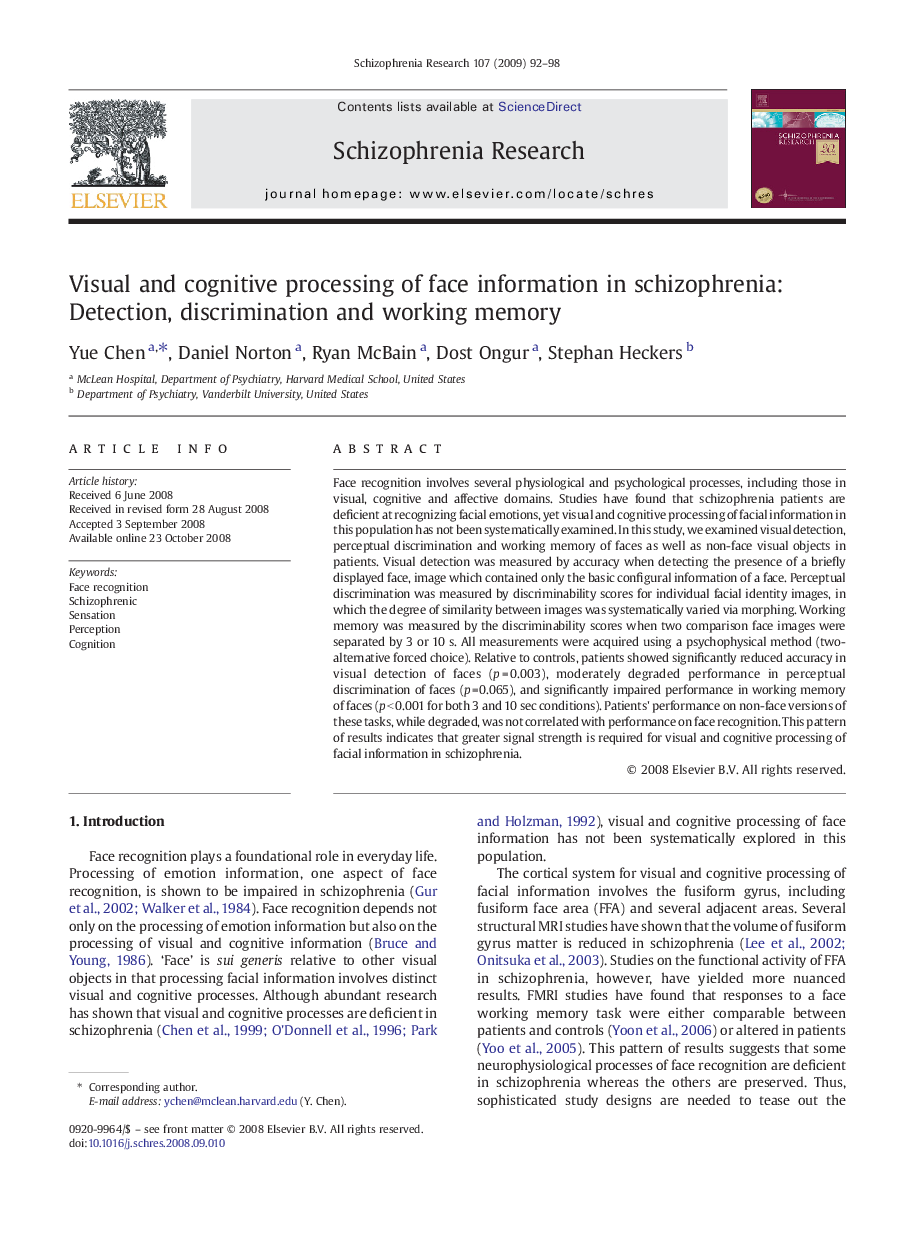| Article ID | Journal | Published Year | Pages | File Type |
|---|---|---|---|---|
| 10308301 | Schizophrenia Research | 2009 | 7 Pages |
Abstract
Face recognition involves several physiological and psychological processes, including those in visual, cognitive and affective domains. Studies have found that schizophrenia patients are deficient at recognizing facial emotions, yet visual and cognitive processing of facial information in this population has not been systematically examined. In this study, we examined visual detection, perceptual discrimination and working memory of faces as well as non-face visual objects in patients. Visual detection was measured by accuracy when detecting the presence of a briefly displayed face, image which contained only the basic configural information of a face. Perceptual discrimination was measured by discriminability scores for individual facial identity images, in which the degree of similarity between images was systematically varied via morphing. Working memory was measured by the discriminability scores when two comparison face images were separated by 3 or 10 s. All measurements were acquired using a psychophysical method (two-alternative forced choice). Relative to controls, patients showed significantly reduced accuracy in visual detection of faces (p = 0.003), moderately degraded performance in perceptual discrimination of faces (p = 0.065), and significantly impaired performance in working memory of faces (p < 0.001 for both 3 and 10 sec conditions). Patients' performance on non-face versions of these tasks, while degraded, was not correlated with performance on face recognition. This pattern of results indicates that greater signal strength is required for visual and cognitive processing of facial information in schizophrenia.
Related Topics
Life Sciences
Neuroscience
Behavioral Neuroscience
Authors
Yue Chen, Daniel Norton, Ryan McBain, Dost Ongur, Stephan Heckers,
